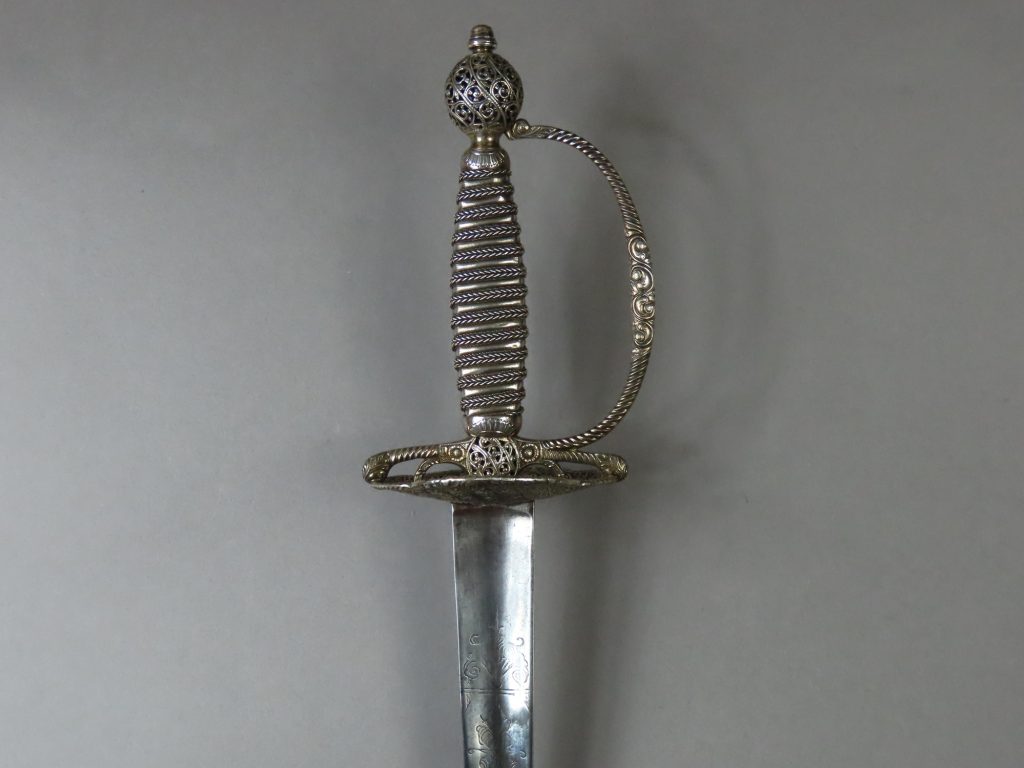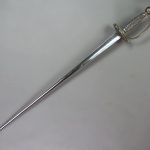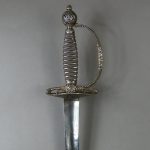
An English Silver Hilted Small Sword by William Kinman of London Hallmarked for 1768 / 1769
To enquire about this itemplease click here
Price: £2,400
Ref: 52092421
Item Description
An exceptional pierced dish hilted smallsword by the renowned 18th century London silversmith and cutler William Kinman, date-stamped for 1768 / 1769. The hallmarks are of small type stamped into the Pas D’Ane rings and consist of the maker’s mark of “W K” in raised relief inside a depressed irregular panel with a pellet between the letters, the lion passant mark, crowned leopard’s head assay mark and date stamp.
Kinman’s work, together with a few of his contemporaries, represents the highest standard of English silver craftsmanship of the time as is to be seen in the hilt of this sword. The dish guard, pommel and ricasso are pierced and engraved with exquisitely detailed foliate scrolls formed within diagonally spaced panels, the sides of which emulate waving tendrils. The delicacy of the interior of the dish guard is supported by a strengthening of the rim which is decorated with floral designs front and back with gadrooned engraving to the sides, which is repeated on the knuckle bow and quillons.
The baluster shaped wooden grip is of rounded rectangular section diagonally bound with silver strip interspaced with a double length of plain wire with thinner twists on each side, mounted with silver cap terminals top and bottom engraved with floral designs. The hilt is as much an example of the high standards of design and execution required of the 18th century London silversmith as it is as an effective weapon maker.
Silver hilted small swords were fashionable attire for 18th century gentlemen. Mostly worn for effect as a show of wealth and taste, someone wearing such a sword was also announcing to the world that he could use it, and was at risk of being invited to do so. Despite the stylish and delicate appearance of these swords they were formidable dueling weapons.
The triangular section, stiff, robust, hollow ground bright blade retains its engraved decoration on both sides at the forte including panels of foliage and strapwork on each side, with stands of arms inside ovals between, indicating that the sword originally belonged to a military officer.
The sword is in fine condition overall. There are no losses or repairs to the hilt which has maintained its original pleasing outline. The blade is 32 inches (just over 81 cm) long and overall the sword is 38.5 inches (98 cm) long.
William Kinman was one of the most influential and preeminent makers of silver hilted swords working in London in the third quarter of the 18th century. He made swords for the London social and military elites. He was a leading member of the Founders’ Company of London and served in all the major
offices of the guild including Master.
Kinman was born in 1728 and was sworn free of the Founders’ Company in 1750, when presumably he started to make silver hilted swords under his own name and was admitted to livery in 1757. Kinman entered his first mark at Goldsmiths’ Hall in 1759 (Grimwade 1990 reference 3210) which is his mark on this sword. William Kinman was at his most prominent in the earlier part of his career, when this sword was made, later becoming bankrupt due to
the failure of a founding business he was involved in.
For contemporary silver hilted swords by William Kinman and other notable London makers see Leslie Southwick, “London Silver-Hilted Swords”, Royal Armouries, 2001. And for further information on Kinman’s life of see pages 159 and 160.

















